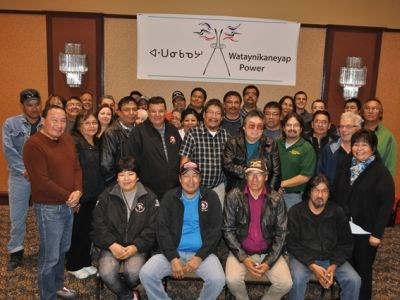A new partnership will help expand grid connections to 16 remote First Nation communities in Northwestern Ontario.
On Aug. 27, WataynikaneyapPower — which represents 20 First Nation communities in the Far North — signed a partnership agreement with FortisOntario Inc. and Renewable Energy Systems (RES) Canada Inc. Wataynikaneyap holds a majority interest in the project, which is mandated and supported by community leadership.
“Our people's vision is to own, control and benefit from major infrastructure development in our homelands. Through this partnership, we are changing the landscape of how First Nations can do business into the future,” said Margaret Kenequanash, chair of Wataynikaneyap Power, in a news release. “Together we have reached a major milestone towards getting our communities off diesel generation, and improving the socioeconomic situation for everyone's benefit.”
The Fortis-RES Partnership, selected through a competitive process as a qualified transmission partner, will work with Wataynikaneyap Power and will invest in the project.
“RES Canada is pleased to join Wataynikaneyap Power and FortisOntario in the completion and ownership of the Wataynikaneyap Transmission Project,” says Glen Davis, president and CEO of RES Canada, in the release. “This cost-effective and much-needed project will serve remote communities, reduce diesel subsidies, create jobs, and stimulate economic development.”
“FortisOntario is honoured to be selected as the transmission partner for Wataynikaneyap Power,” said Bill Daley, president and CEO of FortisOntario. “We look forward to a collaborative partnership for the development, ownership and the operation of these important connections to the remote First Nation communities through upgrading the existing grid.”
In 2010, the First Nation communities partnered with Goldcorp, who provided early development funding. Goldcorp officially exited the project earlier this year.
Construction is planned to start in early 2018, but government funding is still required to make the project a reality.




